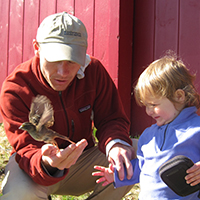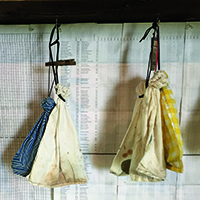Research
River Point Bird Observatory is a scientific research station where we use mist nests to capture, band, and release migratory songbirds. Bird banding stations like River Point allow us to study spring and fall migration and develop an understanding of long-term population trends. Factors that may influence the status of songbird populations can also be studied to inform conservation efforts.

Click here for a summary of the 2020 season at River Point, which includes notes on Spring and Fall migration monitoring efforts as well as season banding totals.
Explore Our Data

At BRI we conduct research projects to tackle questions about bird populations, survivorship, and ecology. Be sure to visit the “Explore Our Data” page to view real scientific data collected at River Point Bird Observatory, in a framework that will allow you to ask your own questions about avian ecology, and find answers through your own scientific investigations!
Migration Monitoring

Monitoring migratory songbirds using mist nets is a standardized way of counting birds and marking individuals. Operating the banding station at River Point Bird Observatory in spring and fall allows us to contribute to the scientific community’s understanding of migration timing, species composition, and avian abundance. Since the station opened in 2011, we have handled more than five thousand individual birds from more than 70 species.
Veery Migration

Understanding the annual cycle and movements of species is critical for implementing effective conservation strategies. In 2013, BRI began tracking Veeries that nest at River Point Conservation Area to determine their wintering areas and gain insight about their migration strategies. Funding from the Davis Conservation Foundation has provided the chance to share the amazing journeys of these birds.
BRI researchers attached small tracking devices called geolocators to 15 Veeries to track their migration and gather data about their wintering grounds. In the following years, researchers recaptured the same individuals and recovered seven of these tracking devices to download migration tracking data. Several Veeries flew out over the ocean during their southward migration to Brazil for the winter. These data will be used to inform conservation efforts and to highlight the amazing behaviors of migratory songbirds.
Southern Maine Nestbox Trail
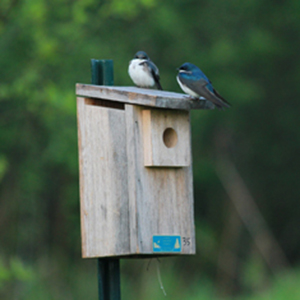
BRI staff and volunteers install and monitor nest boxes at River Point and other sites in southern Maine. Managing nest boxes provides important data about the nesting habitats for cavity-nesting birds. Focal species for this project include Tree Swallows and Eastern Bluebirds—two species that have declined regionally in the last 30 years. At River Point we manage 48 nest boxes, and have seen the return of Tree Swallows we banded as nestlings to breed at the property. Data collected through this project is shared through The Cornell Lab of Ornithology’s NestWatch portal.
MAPS

The Monitoring Avian Productivity and Survivorship (MAPS) Program is a continental research effort managed through the Institute for Bird Populations in California. River Point Bird Observatory is one of hundreds of bird banding stations across North America that study birds during the summer breeding season using a highly standardized protocol. These efforts allow us to assess demographic parameters such as survival rates and reproductive rates for bird populations, and understand some of the factors driving population declines.
Tick Sampling
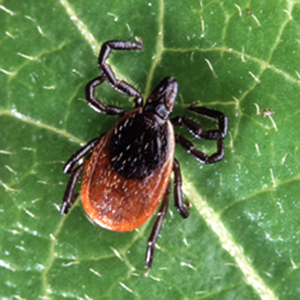
Some species of ticks bite birds as well as people, and can carry diseases like Lyme disease. BRI and partners at the Maine Medical Center Vector-borne Disease Lab are collecting ticks from migratory and breeding songbirds at River Point Bird Observatory to understand what bird species are most susceptible to tick bites, what species of ticks occur on songbirds in Maine, and how these tick populations are spreading.
Watch this short video produced by Bangor Daily News to learn more about our efforts to study ticks on migratory birds in Maine.
EEE in Maine Songbirds

With support from Maine Outdoor Heritage Fund, BRI and partners at the Maine Medical Center Vector-borne Disease Lab and Centers for Disease Control and Prevention have conducted a serosurvey (blood serum test) of Eastern Equine Encephalitis (EEE) in Maine songbirds. EEE is a mosquito-transmitted virus that is rare in humans, but can cause serious illness. Monitoring EEE in birds provides baseline data about the prevalence of this disease in Maine’s songbirds.
This research has been published in the Journal, Vector-Borne and Zoonotic Diseases. Click here to read the full article.
Mercury in Northern Waterthrush

The Northern Waterthrush, a species of warbler, moves through River Point Conservation Area during spring and fall migration. Probably because of their propensity to nest in wetland areas and near streams, Northern Waterthrushes seem to bioaccumulate the heavy metal mercury in their systems, which can cause neurological and reproductive impacts. We are measuring mercury exposure in Northern Waterthrushes captured at River Point Bird Observatory to gain a better understanding of exposure levels and potential for impacts to this species.
View this poster to learn more about our Northern Waterthrush research at River Point.
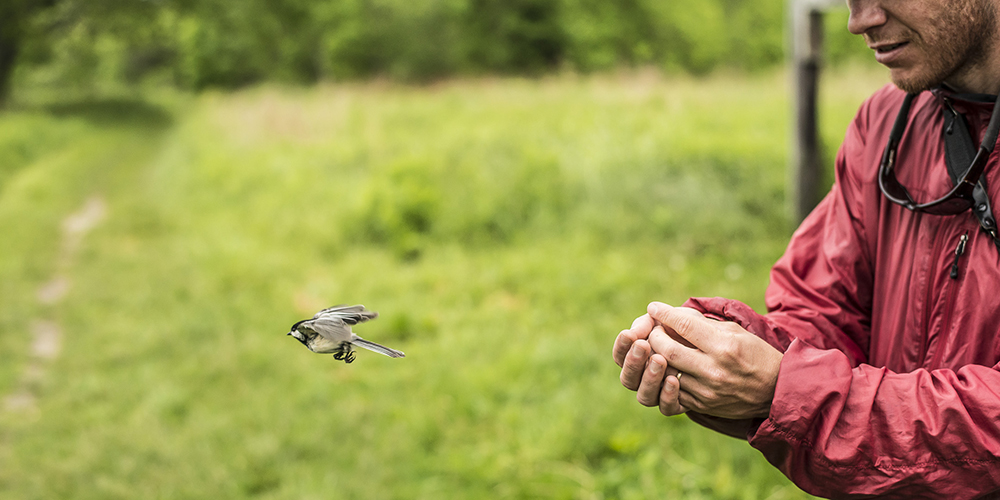
Photo Credits: Header image © BRI-Jonathan Feeley; Banded Common Yellowthroat © BRI-Ian Johnson; Veery © Shutterstock-Paul Reeves Photography; Tree Swallows on Nestbox © BRI-Felipe Guerro; Yellow Warbler © BRI-Ian Johnson; Blood Samples © BRI; Northern Waterthrush © BRI




